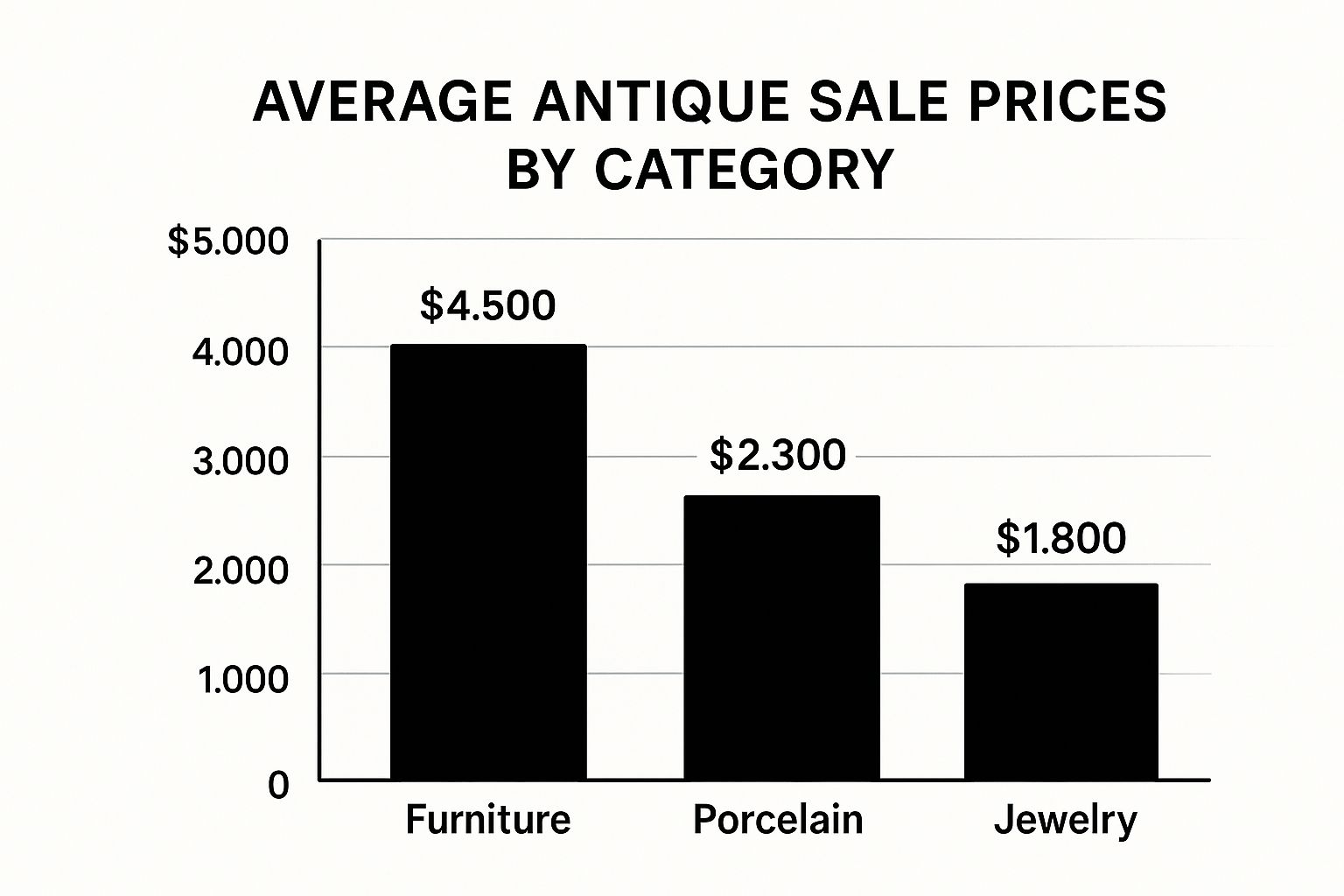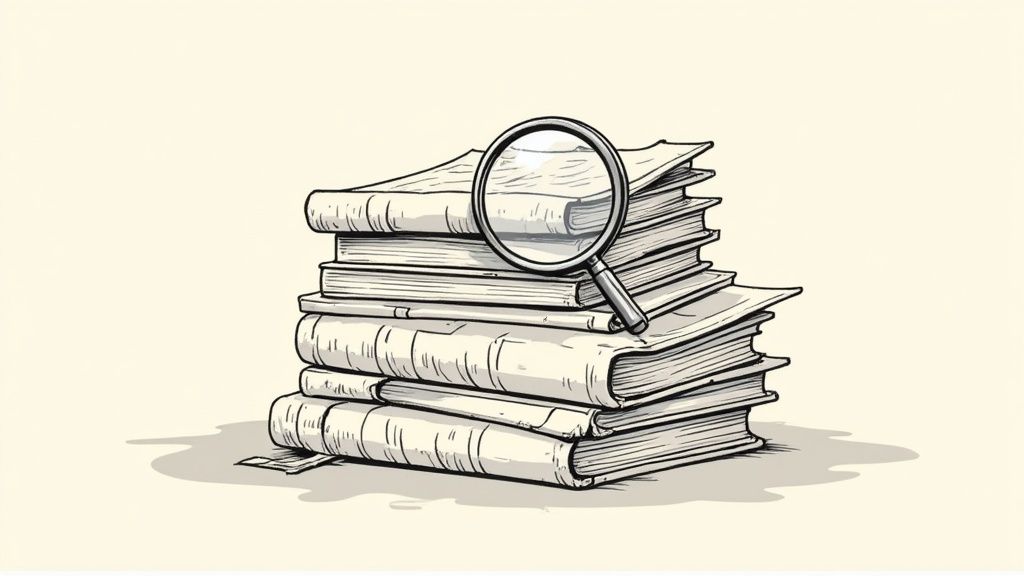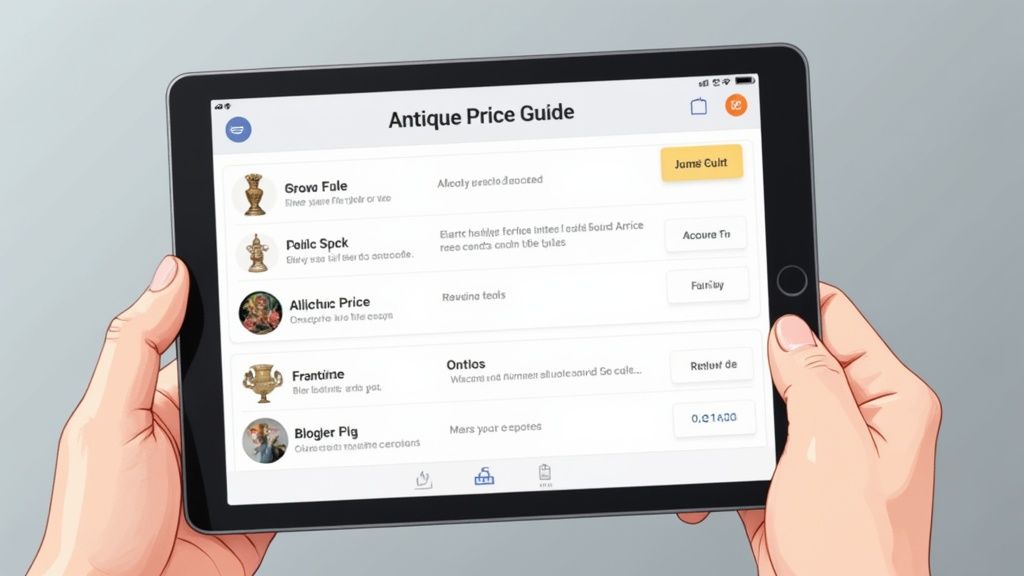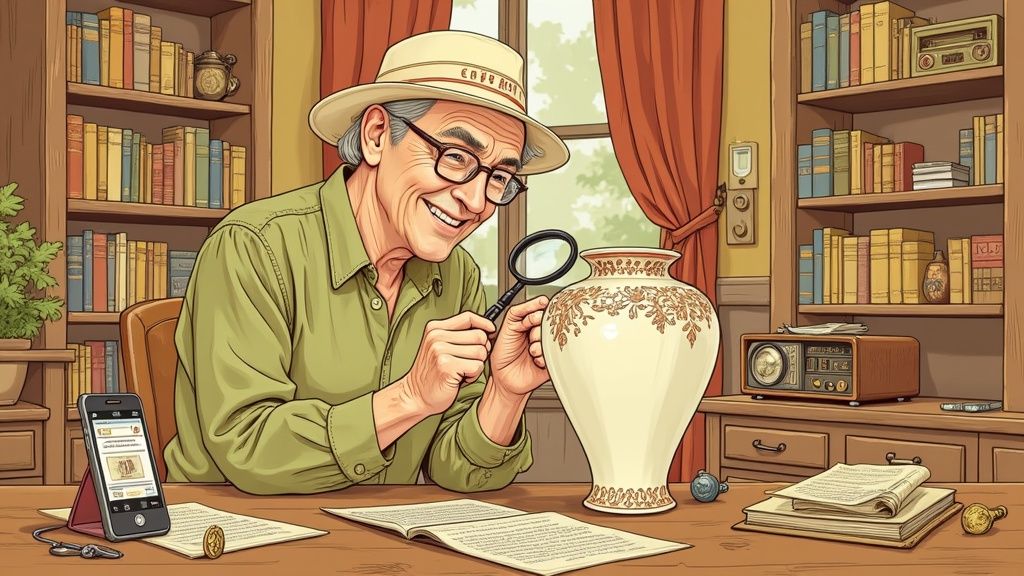What Actually Makes Antiques Valuable (Hint: It's Not What You Think)

Let's talk about what really makes antiques valuable. It's often surprising. After years of chatting with collectors and appraisers, I’ve learned even seasoned pros can be caught off guard. Sure, age and how something looks matter, but historical significance, maker's marks, and the condition of a piece can drastically impact its price.
I once stumbled upon a beat-up old toolbox at a flea market. It looked destined for the dumpster. But guess what? Inside were tools stamped with the mark of a famous 19th-century craftsman. That "junk" toolbox sold for thousands! On the flip side, I've seen gorgeous, ornate pieces with little historical context go for peanuts. It's all about the hidden details.
This brings me to provenance. Think of it as an antique's biography, tracing its ownership and journey through time. A solid provenance can seriously boost an item's value. Imagine owning a teacup that once belonged to Abraham Lincoln—that documented connection transforms the object into something much more significant. For more on figuring out antique values, check out our antique price guide.
Market Trends and Antique Values
The antiques market is a fascinating beast, fueled by a passion for history and craftsmanship. In 2024 alone, it generated a whopping USD 58.4 billion in revenue. That tells you something about the enduring appeal of these one-of-a-kind objects. Discover more insights into the antique market. Understanding these market forces is key for any collector.
It’s important to know what's currently in vogue. Why is everyone suddenly crazy about mid-century modern furniture? How do cultural shifts influence what collectors prize? Keeping up with these trends gives you an advantage. You might just uncover those hidden gems, those undervalued pieces with serious potential. Combine that with a sharp eye for detail, and you’ll be well on your way to unlocking the true value hidden within antiques.
Becoming a Detective: Uncovering Your Antique's Hidden Story
Every antique whispers a story, and figuring it out is a huge part of understanding its value. It's like being a detective, piecing together clues! You'll learn to decipher those mysterious maker's marks, pinpoint the era it came from, and discover resources that most people don't even know exist.
Let's say you stumble upon an old chair tucked away in your attic. At first glance, it seems ordinary. But then, you notice a tiny, almost invisible stamp. Could it be a maker's mark? Absolutely! These little markings are often the key to unlocking an item's origin and value. It feels like cracking a secret code. Speaking of maker's marks, you might find our guide on identifying antique jewelry helpful – it shows just how crucial these marks are in jewelry valuation.
Research Resources and Real-World Examples
Forget the Dewey Decimal System – libraries are treasure troves for antique lovers! Many have special archives devoted to antiques and decorative arts, packed with old catalogs, trade journals, and historical documents. These can offer invaluable insights into your antique’s past. For instance, your local historical society might have photos or records of a furniture maker who worked in your area generations ago.
Don't underestimate the power of the internet, either. Online databases like WorthPoint and Kovels are packed with past auction results and antique prices. This information provides crucial market context, giving you a solid foundation for how to find the value of antiques similar to yours.

This infographic illustrates the average sale prices across different antique categories. Furniture tends to fetch higher prices, averaging $4,500, followed by porcelain at $2,300 and jewelry at $1,800. This highlights the significant market variations between different types of antiques.
I've found that having a solid understanding of these market trends can really make a difference when you're trying to determine the potential value of a piece.
To help you in your research, I've put together a table summarizing some essential resources:
Essential Research Resources for Antique Identification Comparison of different research methods, their effectiveness, cost, and typical timeframe for getting results
| Resource Type | Best Used For | Cost | Time Required | Reliability |
|---|---|---|---|---|
| Online Databases (WorthPoint, Kovels) | Price comparisons, identifying similar items | Subscription/Per Report | Immediate to a few days | Generally reliable, but always cross-reference |
| Library Archives | In-depth historical research, manufacturer information | Free (usually) | Several hours to several days | Highly reliable, especially for older items |
| Local Historical Societies | Local or regional antique information, provenance research | Free or small donation | Varies widely | Can be very reliable for local history |
| Antique Dealers/Appraisers | Preliminary valuations, specialized knowledge | Consultation fees or commission | Varies, can be immediate | Reliability depends on the individual's expertise |
| Auction Catalogs | Understanding current market trends, price comparisons | Free online, or purchase price | Immediate | Good for understanding recent sales data |
This table gives you a good starting point for your research. Remember, combining different methods usually yields the best results.
Documenting Your Discoveries
Think of yourself as building a case file for your antique. Clear photographs and detailed notes are essential. High-quality images of your antique, especially close-ups of any markings or unique features, are important for future reference or if you decide to get a professional appraisal.
I also recommend setting up a system to organize your research. A simple spreadsheet or even a notebook works well. Keep track of maker’s marks, dates, historical information, and anything else you uncover. This not only helps you understand your antique’s value but also proves incredibly useful when you're selling or insuring it. It's like creating a pedigree for your piece.
Reading Market Trends Like a Seasoned Professional

Understanding market dynamics is essential for buying and selling antiques effectively. Think of it like riding a wave – you have to understand its flow to catch it just right. Everything from global trends and regional preferences to the overall economy impacts how antique values change. These shifts can catch even seasoned collectors off guard.
I remember once seeing a collection of antique toys, which had been consistently increasing in value, suddenly plummet when a new video game console hit the market. Kids, and consequently their parents, shifted their interest, directly impacting the demand for those once-coveted toys.
Spotting Emerging Trends
Being able to spot a trend before it peaks is like striking gold. Take mid-century modern furniture, for instance. It has absolutely exploded in popularity recently, with certain pieces now commanding eye-watering prices. Conversely, some traditional Victorian-era items, once highly prized, have seen a decrease in demand.
This doesn't mean Victorian antiques are worthless, though. It just reflects a change in what the market wants. This is where understanding the global market becomes especially important. When evaluating an antique's value, you absolutely have to consider worldwide trends and their influence on pricing. The collectibles market as a whole, which includes antiques, stamps, and other items, was estimated at USD 294.23 billion in 2023. It's projected to reach USD 422.56 billion by 2030, with a CAGR of about 6.4% in certain regions. Discover more insights into the collectibles market.
The Influence of Culture and Technology
Cultural changes, what different generations like, and even social media trends all factor into what people collect. Platforms like Instagram and TikTok can significantly influence what's hot and what's not. A renewed interest in vintage clothing, fueled by social media influencers, can suddenly cause the price of certain styles to skyrocket. These trends create great opportunities for informed collectors to acquire items before they become widely popular and potentially much more expensive.
Keeping up with these market dynamics requires staying informed. Regularly checking auction results, reading trade publications, and connecting with online communities of antique enthusiasts can provide invaluable insights into these market fluctuations. This ongoing learning is key to making smart decisions about buying, selling, or even just holding onto items in your collection. Just like a stockbroker monitors the market, a savvy antique collector keeps an eye on trends to maximize the value of their collection. This active engagement transforms collecting from a passive hobby into a dynamic and rewarding pursuit, enriching both your knowledge base and potentially your financial portfolio.
Getting Expert Opinions Without Breaking Your Budget
Professional appraisals can be a real hit to the wallet, but they're not always necessary. The key is knowing when you absolutely need a professional and when you can confidently tackle the valuation yourself. I'll share some tips on finding reputable appraisers who won't charge a fortune, what you can realistically expect from a formal appraisal, and how to best prepare your antiques for evaluation.
Beyond Appraisals: Smart Strategies for Savvy Collectors
More importantly, let me tell you about a secret weapon used by experienced collectors: alternative valuation methods. Think about it: specialized dealers eat, sleep, and breathe their niche. Their informal assessment can often be more valuable than a formal appraisal document. Antique shows? Goldmines for informal opinions. Chat with seasoned vendors – you’ll be amazed at the insights they'll share. Speaking of which, you might find our guide on how to identify antique furniture helpful.
Online expert services are another great resource. They often cost significantly less than traditional appraisals and can offer quick, reliable assessments. One trick I use is getting multiple perspectives – dealer opinions, online valuations, even those casual chats at antique shows – without paying for multiple formal appraisals. It’s like assembling a mini-focus group for your antique!
Interpreting and Verifying Expert Assessments
Let's talk about understanding those expert opinions. Don’t just take an appraisal at face value. Learn to interpret the findings, understand the reasoning behind the valuation, and, most importantly, verify the information. Cross-reference the appraisal with other sources. Does it line up with recent auction results or what you're seeing in online price guides? Are there similar items currently on the market?
Dealers vs. Appraisers: Knowing When to Choose Which
Sometimes a dealer's quick take at an antique show is more useful than a formal, written appraisal, especially when you're just trying to get a quick sense of an item’s potential. Dealers are constantly buying and selling, so they have a real feel for the market. They can give you a realistic idea of what a piece might sell for right now. Remember that story I told about the beat-up old toolbox? A dealer at a flea market instantly spotted the maker’s mark, and that led to a nice little profit. That quick assessment was priceless.
Formal appraisals, on the other hand, are essential for insurance or when you're dealing with high-value pieces. They offer documented proof of an item's worth, which is vital in cases of damage, loss, or when settling an estate. Knowing when to use which approach is the key to getting the most accurate valuations without overspending. This balanced approach helps you wisely use your budget, saving the professional appraisals for the really important situations and using other methods for more routine valuations.
Mastering Digital Tools That Actually Work

This screenshot shows the LiveAuctioneers website – a favorite haunt of mine for browsing and bidding. See how the homepage displays such a variety of items? It really gives you a sense of the sheer breadth of antiques and collectibles you can find online. Just scrolling through a site like this lets you quickly compare similar pieces and get a feel for the market.
Researching antiques has changed drastically. Forget dusty books and hushed auction houses – we've got the internet now! But knowing which online tools actually work is crucial. Think of it as panning for gold: you need the right tools to sift through the dirt and unearth those precious nuggets.
Auction Databases and Price Guides
For me, nothing beats checking past auction results. Sites like LiveAuctioneers and Invaluable are goldmines for this. They give you a real-world sense of what similar items have actually sold for. This is key. Don't get fooled by asking prices—everyone's got dreams of striking it rich! Trust verified sales data from real transactions. That's your compass in this market.
Price guides like Kovels can also be helpful for identifying pieces and getting a general price range. I use them all the time as a first step. But remember, they’re guides, not guarantees. Prices swing wildly depending on condition, provenance, and what’s hot right now. Always cross-reference with auction data.
Specialized Websites and Forums
Beyond general price guides, you'll find treasure troves of specialized websites. These niche sites are dedicated to specific categories, like pottery, furniture, or jewelry. They often have detailed catalogs of maker's marks and mountains of manufacturing information. For example, if you’re looking at a piece of pottery, sites like Ceramic Arts Daily are a godsend for identifying those tiny marks and figuring out who made it. This kind of granular detail can make a real difference in your valuations.
And don't forget the power of online forums and collector communities! I’ve learned so much from these virtual hangouts. They’re where the true enthusiasts gather, sharing knowledge and experiences. It's like having a network of expert friends at your fingertips.
Emerging Technologies: AI and Image Recognition
Even AI is getting in on the action. Image recognition apps can now identify pieces from photos, and AI-powered valuation tools are becoming increasingly common. These can be fantastic for quick initial assessments and finding comparable items. I've used them myself and been surprised at what they can do. But be careful – they're not perfect.
AI can sometimes miss the nuances of condition and provenance. And these things really affect value. Never rely solely on automated valuations. Human expertise is still essential, especially when dealing with higher-value items. The online art and antiques market is a bit of a rollercoaster. In 2023, online sales climbed by seven percent, reaching USD 11.8 billion. Then in 2024, they dipped by 11 percent to USD 10.5 billion. It's a wild ride! This report breaks down the trends even further. But even with the ups and downs, online platforms are here to stay. They've opened up the market like never before, making it easier for both buyers and sellers to connect.
Avoiding Expensive Mistakes That Trip Up Most Collectors
Even seasoned collectors sometimes stumble when figuring out the value of antiques. I've seen it firsthand – pricey blunders ranging from emotional overspending to completely misjudging an item's condition. Believe me, these traps are easy to fall into. So, how can you steer clear?
The Dangers of Emotional Attachment and Sentimentality
One of the biggest pitfalls? Getting emotionally attached. That antique dresser might bring back warm memories of your grandmother, but sentimental value rarely reflects the actual market value. I once watched a collector pay triple the market price for a chipped teacup just because it belonged to her great-aunt. Ouch. A tough lesson, but a valuable one. Remember, separating your feelings from the facts is key when evaluating antiques. Objectivity will help you make smart choices and avoid costly, nostalgia-driven mistakes.
Decoding Condition Grades and Their Impact on Pricing
Understanding condition grades is absolutely essential. A seemingly insignificant chip or crack can drastically reduce an item’s value. Even minor imperfections have a bigger impact on pricing than you might think. It's not enough to say an antique is “in good condition.” You need to know the standard grading system – from “mint” to “poor” – and how each grade affects the price. It's like buying a used car. A few dings and scratches can knock thousands off the asking price. The same principle applies to antiques.
Reproduction Red Flags and the Importance of Authentication
Watch out for reproductions. They’re everywhere, and some are incredibly convincing. Even experienced buyers can get fooled. Learn to spot the telltale signs: inconsistencies in the materials, finishes that look too perfect, and markings that don't quite match the period. If something feels "off," trust your instinct and investigate further. I once saw a collector shell out big bucks for a set of "antique" chairs that turned out to be clever fakes. A painful mistake that could have been prevented with a little extra scrutiny.
The Pitfalls of Online Price Guides and the Need for Context
Online price guides can be handy tools, but don’t take them as gospel. They offer a general range, sure, but the actual value of an antique hinges on several factors: condition, provenance, and current market trends. I’ve seen identical items sell for vastly different prices depending on these variables. Context is everything. Use price guides as a starting point, but always double-check the information with other sources like recent auction results and appraisals from reputable experts. This cross-referencing helps you get a clearer picture of an item's true worth. Think of it like checking multiple real estate listings before making an offer on a house - due diligence is key.
Maintaining Objectivity and Developing a Discerning Eye
Developing a discerning eye takes time and practice. Examine the details closely, ask questions, and never be afraid to walk away if something doesn’t feel right. Figuring out the value of antiques involves more than just glancing at a price guide. It takes research, careful observation, and a healthy dose of skepticism.
Let's summarize some common valuation pitfalls in a table:
Common Valuation Mistakes and How to Avoid Them Overview of frequent errors collectors make when valuing antiques, their impact, and prevention strategies
| Mistake Type | Why It Happens | Potential Impact | Prevention Strategy |
|---|---|---|---|
| Emotional Attachment | Sentimental value clouds judgment | Overpaying for items | Detach emotionally; focus on market value |
| Ignoring Condition | Not understanding grading systems | Underestimating or overestimating value | Learn standard grading systems; get expert opinions |
| Mistaking Reproductions | Difficulty identifying fakes | Paying premium prices for replicas | Study authentic pieces; look for inconsistencies |
| Relying Solely on Online Price Guides | Lack of contextual understanding | Inaccurate valuation | Cross-reference with auction results and expert opinions |
As you can see, avoiding these mistakes is crucial for sound collecting.
By sidestepping these common traps and cultivating a more objective approach, you’ll be well on your way to becoming a more confident and successful collector.
Your Practical Roadmap to Confident Valuation
So, we've covered a lot of ground! Let's bring it all together into a practical system you can use today. Forget rigid rules – this is about developing a flexible framework, building your own “antique intuition” that adapts to different pieces and situations.
Building Your Valuation Toolkit
First things first: organize your resources. Create a digital folder – maybe in Evernote or something similar – and fill it with helpful links to online databases, auction sites like eBay, and those niche websites we talked about earlier. Bookmark your favorite research tools and save any templates you use for documenting your finds. Trust me, a well-organized system will be a lifesaver every time you stumble upon a potential treasure. I personally use a combination of Evernote and a trusty spreadsheet – old school, I know, but it works!
Next, create your own valuation checklist. This is your personal guide, your cheat sheet to keep you on track. Include questions like:
- Are there any identifying marks (maker’s marks, stamps, etc.)?
- What's the condition? (Be brutally honest with yourself here!)
- What are similar items selling for right now? (Don’t get fooled by outdated pricing from months ago.)
- Is there any documentation or history (provenance) that comes with the item?
This simple checklist keeps you focused on the crucial details.
Navigating Different Scenarios
Let’s be honest, the best way to approach valuation depends on why you're doing it. Are you insuring a family heirloom? You’ll probably need a formal appraisal from a qualified professional. Looking to sell a few things at a flea market? A quick search of recent online auction results and a chat with an experienced dealer might be all you need. Understanding which approach fits the situation is crucial for making smart decisions.
Continuing Your Education
The antique world is a living, breathing thing. Trends change, tastes evolve. What’s hot today could be collecting dust tomorrow. Stay curious! Subscribe to antique publications, follow relevant social media accounts, and get out there – attend antique shows and auctions, even if you’re not buying. These experiences train your eye and keep you in tune with market fluctuations. Remember that mid-century modern furniture boom I mentioned? The collectors who saw that trend coming made a killing!
Realistic Expectations and Ongoing Learning
Finally, a word of caution: not every antique is a jackpot. Some things hold sentimental value but little monetary worth. That's perfectly fine! The joy of collecting often lies in the thrill of the hunt and the stories behind the objects. Learning how to value antiques is an ongoing process. The more you learn, the more confident you’ll become in your assessments.
Ready to level up your antique adventures? Curio, your personal antique companion, is here to help. Just snap a photo, and instantly uncover the history, significance, and estimated value of your finds. Download Curio today and start exploring!
